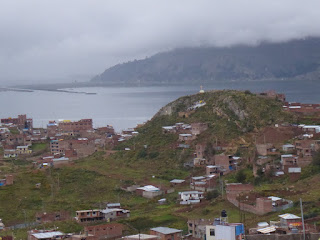Our last stop en route to Cusco was the parish church of San Pedro, known as Peru's Sistine Chapel. There, a strange thing happened. We were warned before we entered the church that there was a strict no fotos policy. Nothing new. Then we were handed a CD, included in the modest admission price, of pix of the church, apparently inside and out. How smart is that? Why don't all museums and churches do that?! Anyhow, we didn't bring a CD player with us on this trip, so I'll post pix in a few days, once we are back in the US.
As I blog, we are awaiting transportation to the airport for a flight from Cusco to Lima and then tomorrow, March 16, from Lima to San Francisco. It will be really good to get back "home." Anyway, in the next week or so I'll do the remaining South American blogposts...Cusco, the Inca Trail, Machu Picchu, and the Sacred Valley.
 |
| Off the web...stay tuned |

































































